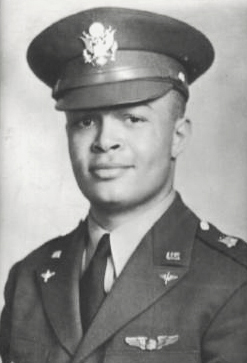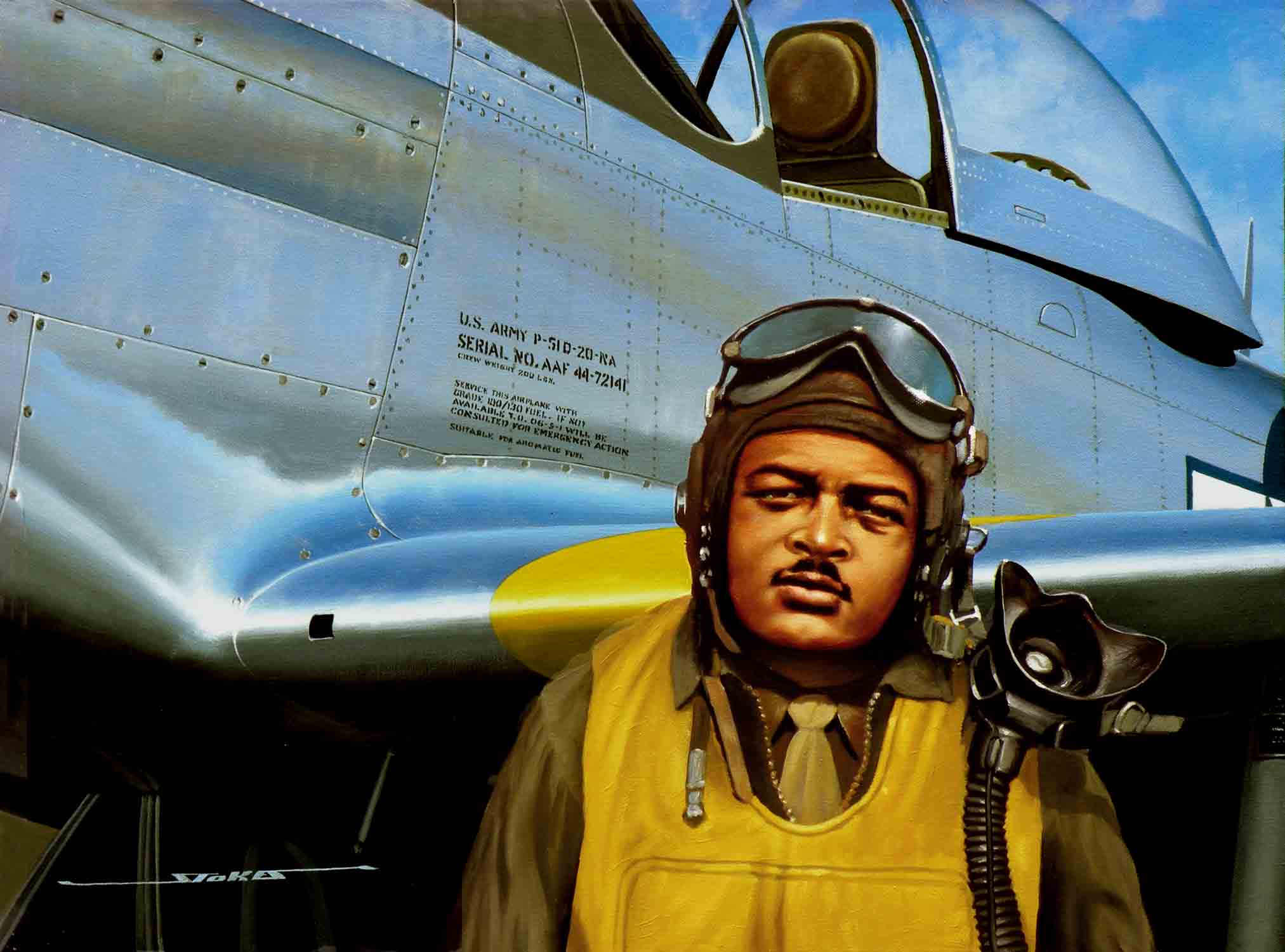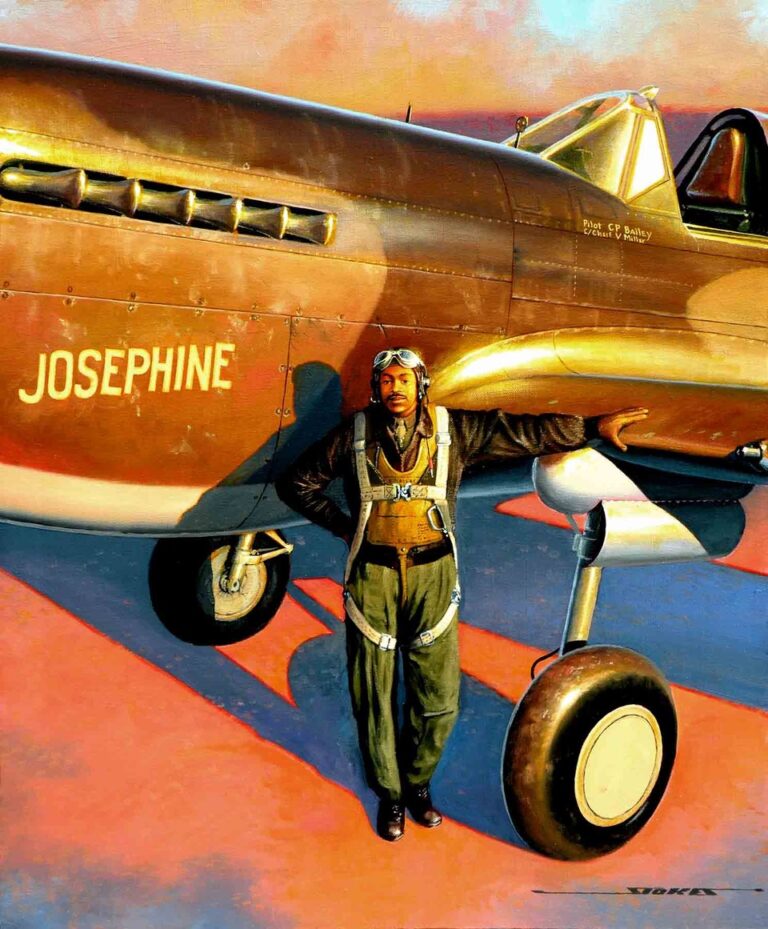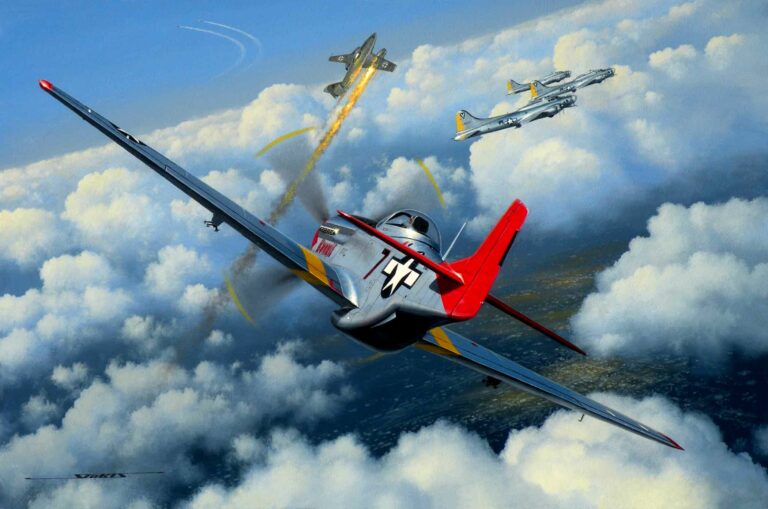Airman George “Spanky” Roberts had already received his pilot’s license in the Civilian Pilot Training Program when he entered flight training in the first class at Tuskegee, Alabama. It was July 1941 and the US Army wasn’t convinced that young black men would make good military pilots. There were 13 pilot cadets in the first class and only 5 made it to the end to become US Army Air Corps fighter pilots. George Roberts was one of those five.
The 99th Fighter Squadron was formed with the five new pilots being the initial pilots. This was to be an all black squadron from top to bottom.
They had been trained to fly P-40 Warhawks in preparation to go to war. As additional Tuskegee cadets graduated into being USAAF pilots, they all were assigned to the 99th until it was finally at full strength. George Roberts became their commanding officer.
George Roberts and the rest of the 99th were deployed to North Africa. They were attached to the 33rd Fighter Group that was based close to Morocco. They flew their first combat on June 2, 1943.
In February 1944, all of the Tuskegee trained pilots, including the 99th Fighter Squadron, deployed to Italy as the 332nd Fighter Group. Roberts, now with the rank of Major, was the initial CO of the 332nd, until Benjamin O. Davis arrived to assume command. An air base was built for the group at Ramitelli, Italy. This is where the “Tuskegee Airmen” really made a name for themselves, first flying P-47 Thunderbolts for a couple of months, then their fabulous P-51 Mustangs. Benjamin O. Davis was the CO of the 332nd, but on the occasion when he needed to go back to the US, George Roberts would step in to be the Commanding Officer of the 332nd.
George “Spanky” Roberts ended the war with over 100 combat missions flown. He then went on to serve in Korea and ended his military career in 1968 with over 6,000 hours of flight time and the rank of Colonel.





